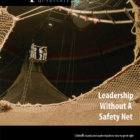This issue of the Nonprofit Quarterly takes a cut at the much-discussed subject of leadership. This is a topic dear to our hearts, because we believe that nonprofits are (1) stronger and more effective when they develop skilled, empowered, and informed leadership at every level within and around organizations; and (2) critical to an active democracy if they take their role as training ground and venue for active citizenship seriously.
The articles in this issue take several approaches to the discussion of leadership, addressing these kinds of questions:
• Do we really have generational issues in the workplace, where older leaders refuse to move over for younger ones? What actually lurks behind the generational divide?
• What common missteps do boards make in selecting new executives, and how can your board avoid them?
• What should a new executive do in the first 100 days of his tenure at the helm of a nonprofit?
• What can an executive coach do for even seasoned leaders?
• How has the nonprofit sector undercut its intentions to develop broader leadership in community building?
• And finally, what part does volunteering play in developing new and more diverse leadership for our communities?
Sign up for our free newsletters
Subscribe to NPQ's newsletters to have our top stories delivered directly to your inbox.
By signing up, you agree to our privacy policy and terms of use, and to receive messages from NPQ and our partners.
But we have purposefully named this edition of NPQ “Leadership Without A Safety Net” to draw readers away from the emphasis on strategic career development and toward a focus on leading for impact and effectiveness. These two objectives often seem to diverge.
In our framing article, “Our Leadership Difference: The “d” Factor” NPQ editors once again entreat readers to see the engagement and development of leaders as the strategic advantage available to every nonprofit. For those of you who do not yet know, NPQ’s mission is “to promote active democracy.” For us that is the bottom line of the sector and of this publication, which we see as a vehicle for achieving that mission. Do we create and lead nonprofits that give people venues in which they can act on their beliefs? Do we ensure that those venues are welcoming, nurturing, respectful, and culturally appropriate?
In the nonprofit sector, people spend alot of time avoiding controversy for fear of losing funding or being excluded from places of power and influence. This generates a desire and need for predictability and acceptability, and that can have a deadening effect on our work and our organizations by slowing our ability to see our own mistakes, creating enormous blind spots, and discouraging inclusion— because inclusion and true diversity are always surprising. The nonprofit sector needs to be more than that. We hope this issue provides some inspiration and guidance as to how to lead powerfully from a collective base.











